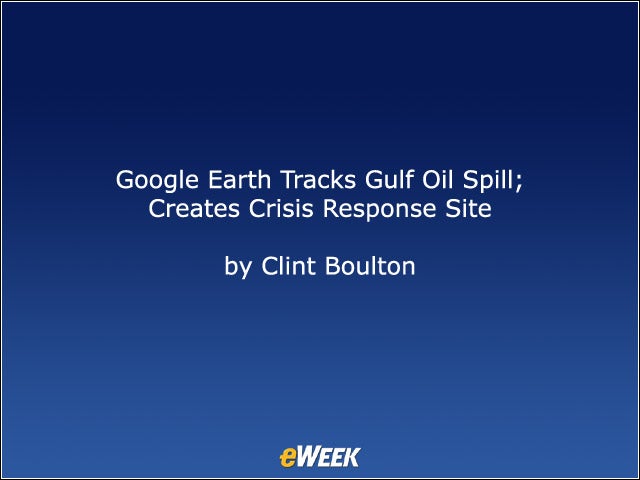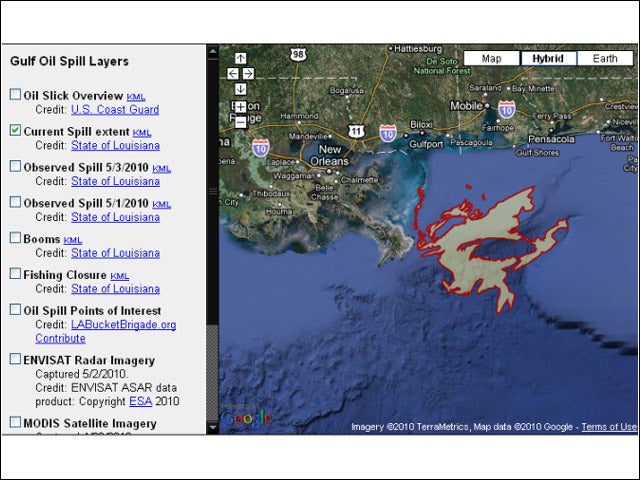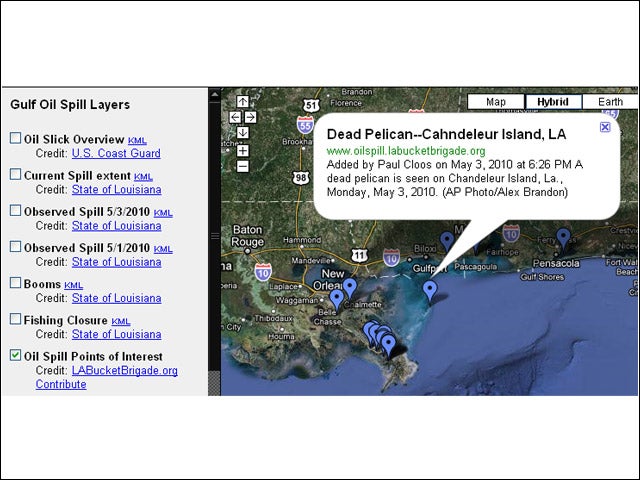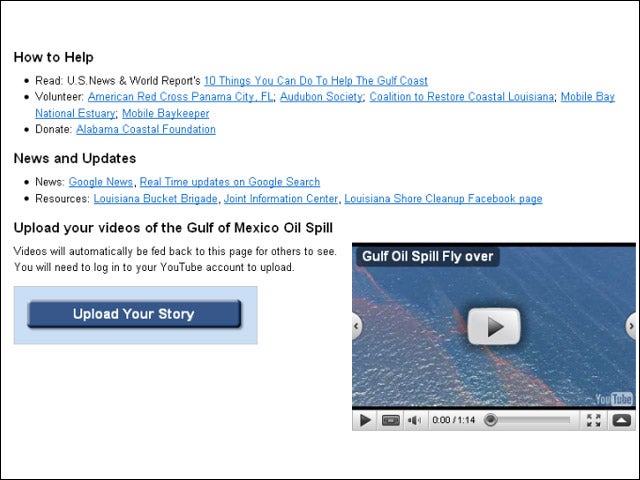eWEEK content and product recommendations are editorially independent. We may make money when you click on links to our partners. Learn More.
2Deepwater Horizon Explosion
Besides killing and injuring drilling platform workers, the resulting oil spill is causing incalculable damage to marine life and threatens to pollute hundreds of miles of Gulf Coast beaches and wetlands. This shot, taken from Wikimedia Commons, spells out the disaster.
3The Oil Spill Over Time
4Google Earth Layer Tracks the Spill
5Crisis Response Center
Google offers this Crisis Response Center to help users gather more information about the catastrophe. Note the current extent of the spill.
6May 3: The Oil Slick Expands
8Fishing Shut Down
9Points of Interest
A fourth generation shrimper based out of Venice, La. describes how he and his family lost this year’s brown shrimp season due to the spill.
10Satellite Imagery
11Google Grabs Wikipedia
12How to Help
Here are the links to more information on the disaster, as well as how to help and send relief. This video shows a flyover of the disaster site. Users may upload their own oil spill disaster videos on YouTube from here, too.











